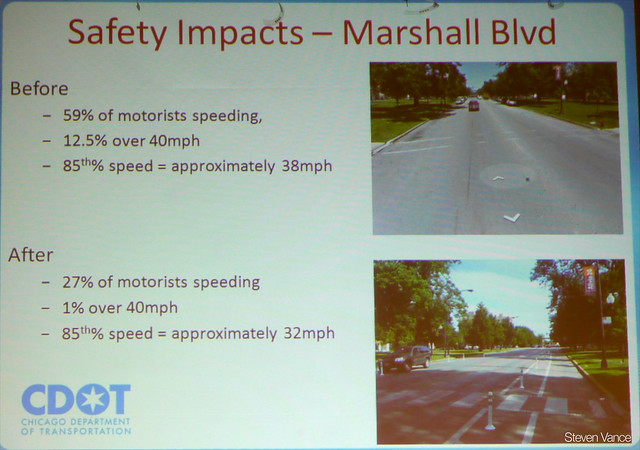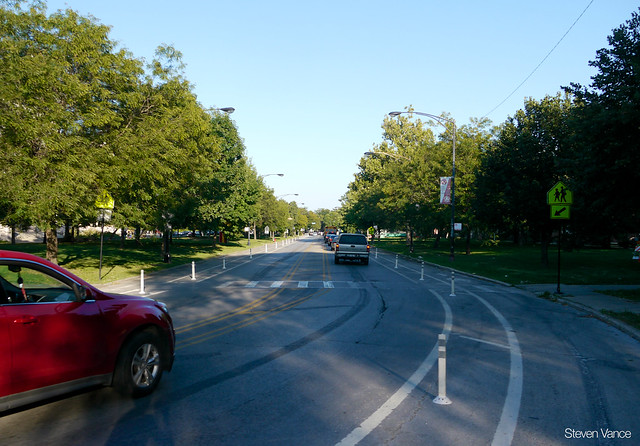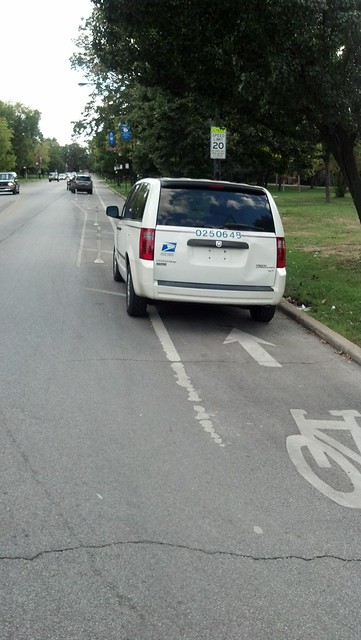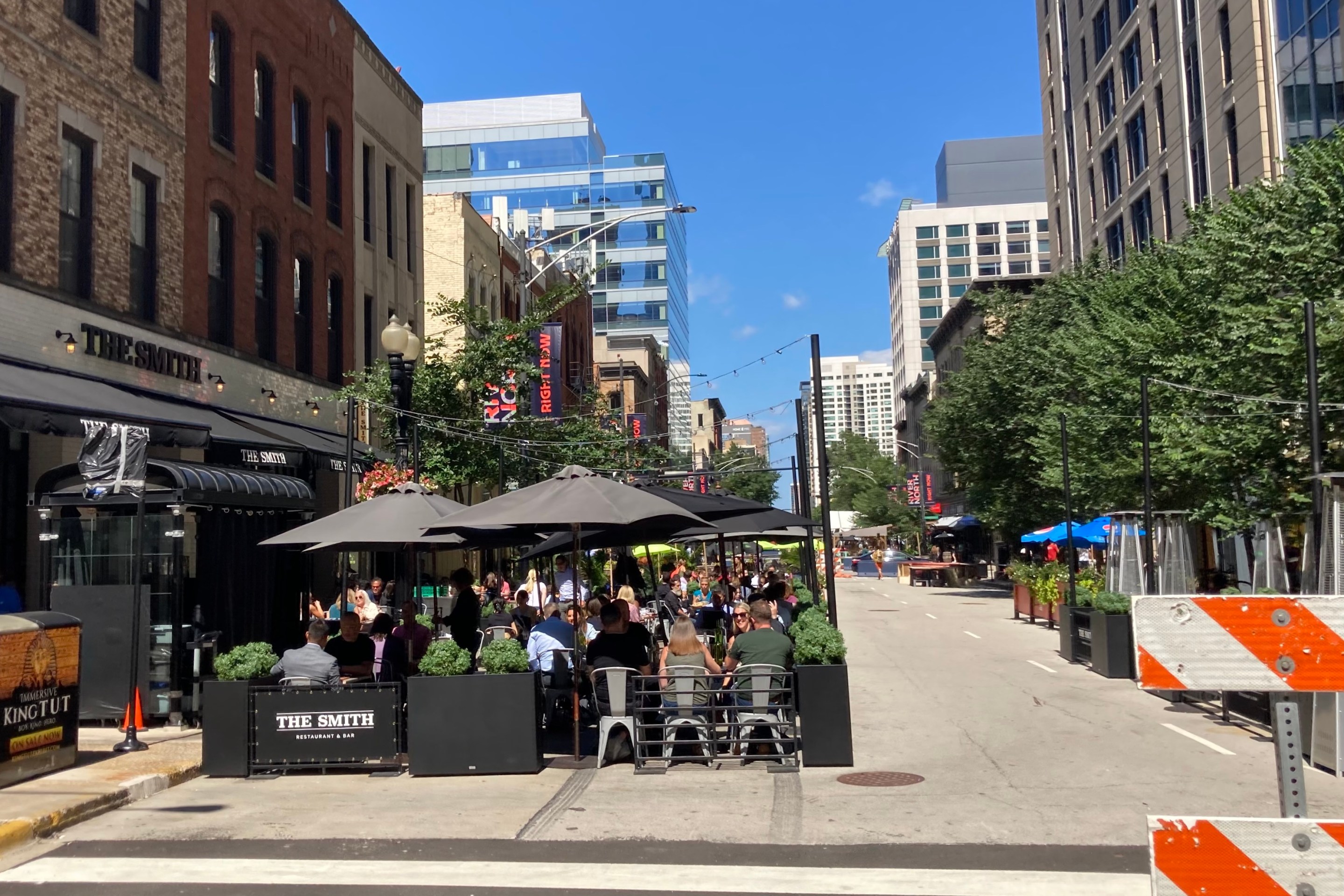Last night about 30 people showed up to discuss car parking issues on Marshall Boulevard in Little Village, at a meeting hosted by 12th Ward Alderman George Cardenas at the Maria Saucedo Scholastic Academy. The redesign of Marshall Boulevard last fall added a protected bike lane on one side of the street and a buffered lane on the other, significantly reducing the incidence of speeding. Confusion about the new parking rules post-implementation soured some residents on the project, however, and CDOT was in a defensive posture last night, promising to add 74 parking spaces to the area.
CDOT has measured a dramatic reduction in speeding since the redesign took effect. Before the project, 59 percent of motorists were speeding and 12.5 percent were exceeding 40 mph. After the project, 27 percent of motorists exceeded the 30 mph limit and only 1 percent were going faster than 40 mph. "The posted speed limit is 30 mph and we certainly don't want people to drive faster than that," said CDOT's Luann Hamilton.
Traffic crashes and injuries also appear to be down thanks to the redesign. In the two years before the redesign, there were four traffic crashes causing injury, including a pedestrian, and 1.45 crashes happened on this stretch of Marshall Boulevard each month. After the redesign, in the first seven months of this year, there were no traffic injuries in the project area, and the monthly crash rate was down to 1.1.
Hamilton apologized for the "poor implementation and aggressive ticketing," and said agency staff are going to try and address the issues. The plan is to add 19 parking spaces back to Marshall, which CDOT's David Smith said is possible because "our design standards have changed" after several bike lane projects. The side streets would get 55 more parking spaces by clarifying signage and removing residential parking permit so that residents of Marshall can use those spaces. Additionally, Smith said they could add parking spaces under the Metra viaduct, which is normally illegal.
After the proposal, Cardenas expressed interest in Divvy and said he wants to build a culture of cycling in the ward, but then he invited the audience to gripe about parking. "How painful is this?" he said, referring to the reduced amount of car parking. Before Cardenas offered the mic to the first member of the public to speak, he said, "Your quality of life is more important to me than protected bike lanes." At no point did he mention the dramatic reduction in speeding on Marshall Boulevard as a result of the redesign, or indicate that calmer traffic and fewer traffic injuries improves quality of life.
Most of the speakers were dissatisfied with the redesign, some because of the parking loss and others because they don't like peeking around parked cars when they cross the street. But those same parked cars would have blocked people's sight lines before the redesign. For people on foot, the street is now significantly narrower, making it safer to cross.
As local resident Dan Korn pointed out, parking issues were a problem before the redesign, with people parking illegally by the Apollo's 2000 theater, waiting to pick up kids from Saucedo Academy, and at a church during funeral services. Korn told the audience that his quality of life has been improved because traffic has calmed. "The numbers don't lie," he said. He added that because he and his wife don't own a car, but ride bikes and take CTA almost exclusively, they're making it better for the neighbors.
As the meeting wrapped up, Cardenas struck a conciliatory note. "Let's put the bike thing aside," he said. "I think we need more parking." The school's principal invited the community to use the their 150-space lot between 7 p.m. and 6 a.m. on weekdays and all day on weekends, and Cardenas said that he and CDOT would look into opening 40 car parking spaces on 23rd Place behind the school, which bans parking between 7 a.m. and 4:30 p.m. on school days. By the end of the meeting, CDOT had identified 74 new parking spaces, the alderman 40, and the principal 150, finding 264 new and reclaimed car parking spaces.
It seems this wish to have more parking can be granted without affecting the bike lane design. However, it won't make the parking-related complaints disappear. Parking needs are never fully solved by adding more spaces, because enlarging the parking supply leads more people to own cars and thus a demand for even more parking.






